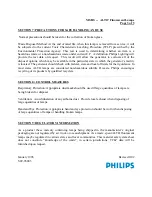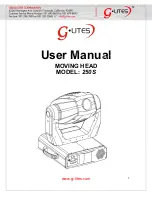
MSDS -- ALTO
‘
Fluorescent Lamps
Page 3 of 3
SECTION 7: PRECAUTIONS FOR SAFE HANDLING AND USE
Normal precautions should be taken for the collection of broken glass.
Waste Disposal Method: At the end of rated life, when this lamp is removed from service, it will
be subjected to the current Toxic Characteristic Leaching Procedure (TCLP) prescribed by the
Environmental Protection Agency. This test is used to determining whether an item is a
hazardous waste or a non-hazardous waste under current E. P. A. definition. Philips Lighting will
provide the test data on request. This result will allow the generator to evaluate all of the
disposal options, which may be available in the particular state in which the generator’s facility
is located. The generator should check with federal, state and local officials for their guidance. In
most states ALTO lamps are considered non-hazardous subtitle D waste. Philips encourages
recycling of its products by qualified recyclers.
SECTION 8: CONTROL MEASURES
Respiratory Protection: Appropriate dust mask should be used if large quantities of lamps are
being broken for disposal.
Ventilation: Avoid inhalation of any airborne dust. Provide local exhaust when disposing of
large quantities of lamps.
Hand and Eye Protection: Appropriate hand and eye protection should be worn when disposing
of large quantities of lamps or handling broken lamps.
SECTION 9: REGULATORY INFORMATION
As a product these mercury containing lamps being shipped in the manufacturer’s original
packaging are not regulated by air, truck or ocean shipment. As a waste, spent ALTO fluorescent
lamps maybe regulated in various states and local communities. This material safety data sheet
does not constitute “knowledge of the waste”, in certain jurisdictions. TCLP data will be
furnished upon request
.
January 1996
Revised 8/02
S09-96003





















